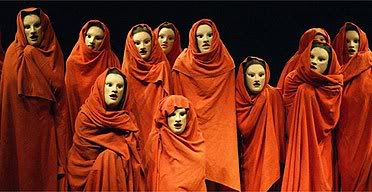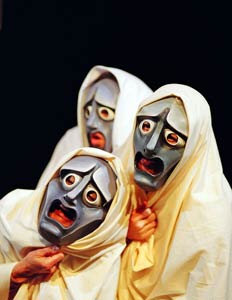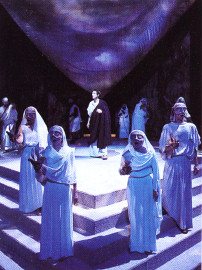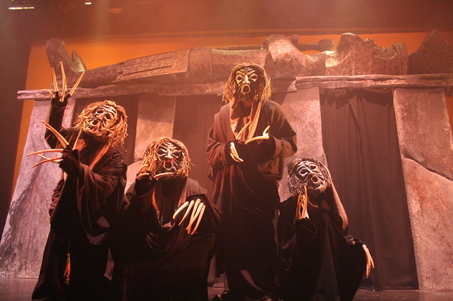How did the role of the chorus develop and what purpose did it serve?
|
In the beginning... the chorus sang and danced in unison, but by 600BC theatre began to become more of a literary (or written) form detailing heroic tales. SO the chorus adapted, becoming more verbal--singing, dancing and speaking in unison
|
In Tragedy:
In Comedy: The chorus consisted of 24 men that were often split into two groups or sides (i.e. in Lysistrata where half of the chorus is a group of old men and half of the chorus is a group of old women) |
What's with the masks? |
|
Really though, masks?
The Rise of the Actor The chorus developed further and the chorus leader (or director) occassionally spoke alone. As this began to occur, the importance of the chorus gradually diminished, which led to THE RISE OF THE ACTOR!
|
As things developed... The chorus began to speak more and more (poets were beginning to wet their feet as playwrights) Remember: The members of the chorus spoke and sang as one, but they represented the many voices of the townspeople, town council, or other groups. To provide exposition, or explain the scene To comment on the action To serve as spectacle (visual entertainment) To describe offstage action AND Later... To interact with characters
That's right, eventually characters (or actors) show up in Greek theatre.
|








